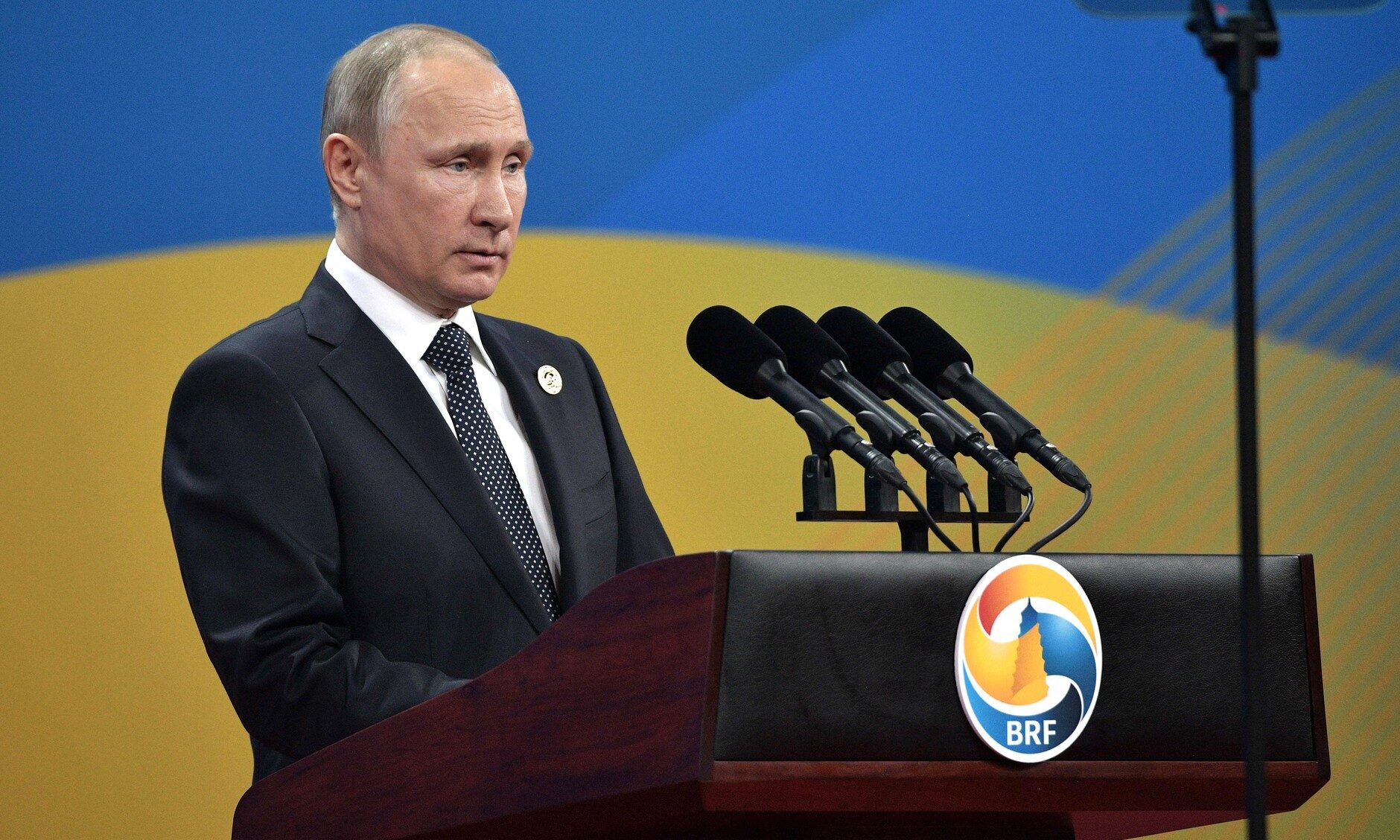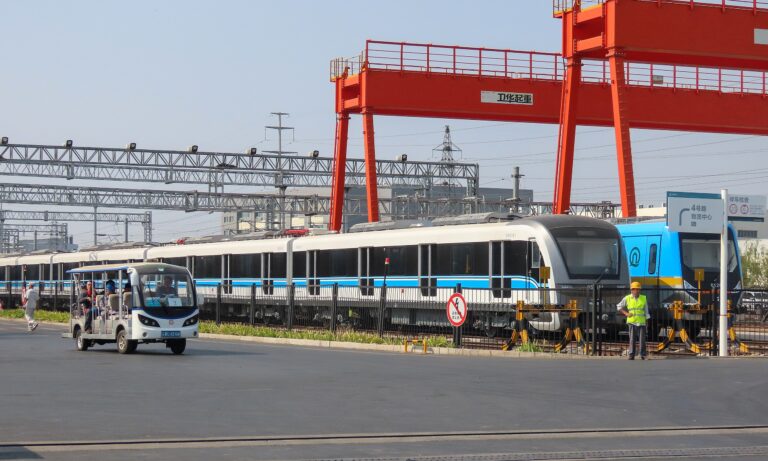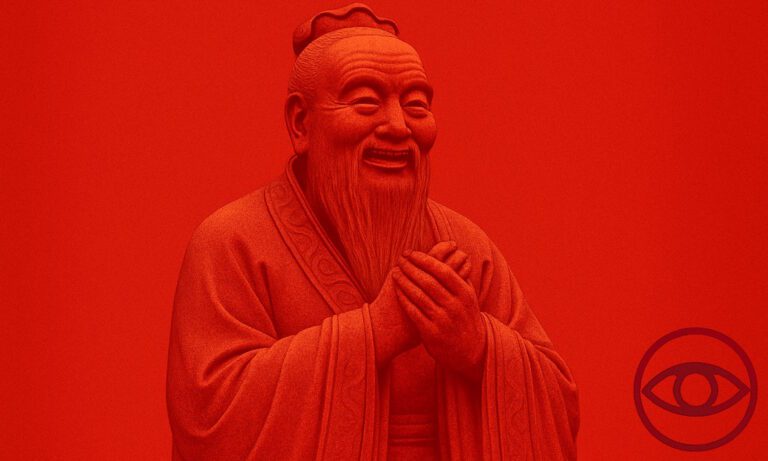
Despite glowing reviews of Putin’s reception in Beijing, Russia cannot conceal the difficulties of its pivot to the East.
All eyes were on Beijing as representatives from over 130 countries gathered for the third Belt and Road Initiative (BRI) forum last week. This year marks the tenth anniversary of the BRI, and China has been eager to seize the global spotlight for President Xi’s beloved brainchild. The event was momentous for Russia as well: it marked the first time Putin visited China since Russia’s invasion of Ukraine, and China was only the second country the Russian President visited since the ICC declared an arrest warrant on his head.
It is easy to understand, then, the minute coverage Putin’s visit to Beijing received in the government newspaper Rossiyskaya Gazeta. The online pages of the newspaper ran a multitude of articles on the event, including several reports on his interview with the China Media Group, his speech at the BRI forum, and his press conference in Beijing. Even Putin’s living arrangements in Diaoyutai were subject to fawning examination. In reference to an article first published in Newsweek, the newspaper noted the difference between Putin’s red carpet reception and China’s deliberate snubbing of US Secretary of State Antony Blinken in June. Of course, Putin’s bilateral meetings with Xi Jinping and other leaders, including Viktor Orbán, also received special mention.
Pushing the Frontiers of Cooperation?
An examination of this media coverage exposes several interesting trends in Sino-Russian relations. Nowhere are these trends more evident than in the media itself. As observers have noted, several state-owned outlets have agreements “to cooperate in mutual sharing of online news resources,” which have seen Chinese news publish Russian disinformation about the war in Ukraine. Conversely, Rossiyskaya Gazeta relied on reports and videos from its Chinese partners to supplement its coverage of the BRI summit, as well as sharing Chinese statistics on the BRI’s global popularity and a summary of Xi’s article on the “Sinicization of Marxism.” The newspaper even published a story about an official visit made by one of its journalists to the studio of the Shanghai Media Group.
In line with BRI objectives, however, the newspaper’s focus was on trade. As Putin mentioned on multiple occasions during the visit, the trade turnover between China and Russia has been steadily rising, reaching $200 billion this year. The increase from 2021 to 2022 alone was a staggering 30 percent, and this is according to Western sources (in large part, however, this number has been driven by Western sanctions against Russia and US efforts to decouple from China).
Of particular importance to Russian observers is the news that 90 percent of the bilateral trade turnover is reportedly serviced in renminbi and rubles rather than the US Dollar, helping Russia assert its independence from the global financial system dominated by the US.
There are other ways in which China is softening the blow of Western sanctions. The share of Chinese cars on the Russian market, for example, has skyrocketed. According to Rossiyskaya Gazeta, its proportion rose from 17 to 46 percent while the shares of once dominant East Asian and European countries have fallen to single digits. Gazprom CEO Alexey Miller boldly asserts that soon, even Chinese consumption of Russian gas will replace that of Western Europe.
Furthermore, Russia is hoping for an increase in Chinese tourism, setting its sights on an expected weekly flight connection between Vladivostok and Dalian. This is despite the industry’s continued stagnation as pandemic-era restrictions gave way to safety-related fears, with tour operators at pains to convince potential Chinese travelers that Russia is not a dangerous country.
Interestingly, Russian state media now publicly confirm what has long been suspected and only recently documented in the West: that China is supplying Russia with dual-use technologies for waging its war in Ukraine. Rossiyskaya Gazeta quotes Evgeny Smirnov, a departmental head at Russia’s State University of Management, as saying that electronics and semiconductors are not the only articles where Chinese imports have expanded. Beijing has, the article continues, “significantly expanded its supplies to Moscow of dual-use technologies, goods, and equipment, primarily microchips and drones.” It seems Russian experts are also encouraging companies to circumvent Western sanctions by investing in China and importing their products back to Russia.
Russian Trade Faces Headwinds
At the same time, there is growing concern about the highly unbalanced nature of the two countries’ growing trade volume. Alexey Maslov of Moscow State University goes as far as to say that although trade is growing, the number of areas in which the two countries trade is shrinking. While Russia runs a surplus in its trade with China, much of this is due to high oil and gas prices. According to the OEC, the majority of Russia’s exports to China are primary commodities, mostly fossil fuels and various metals. Meanwhile, China’s exports to Russia span a diverse array of electronics, household appliances, fabrics, and more. Although Russia aims to diversify its exports, it is unlikely there is much demand in China for Russian higher value-added goods.
Rising trade figures have also been accompanied by concerns that Russian infrastructure is under strain from the economy’s reorientation to eastern markets. One article admits that 150 thousand containers from China have accumulated in Russian railway depots due to insufficient capacity and fears that matters will only get worse as Christmas approaches. The same article further quotes Presidential Aide Igor Levitin as saying that Russian ports have three times the capacity of the railways connected to them.
Of course, efforts are being made to resolve these problems. Russia is planning to construct nine icebreaker container ships by 2035, a rather ambitious goal considering their total number is estimated at over 40, many dating back to the Soviet era. These ships are to traverse Arctic waters along the Northern Sea Route, where navigation is impeded by ice for much of the year. Russia also touts the planned modernization of its railways and digital customs system.
Russia hopes that China’s BRI will become another way to alleviate its infrastructural woes. One member of the Russian delegation to China was Dmitry Azarov, governor of the Samara Region. Situated on the Volga, it is hoped that the region will become a crossroads for Russia’s international trade with the construction of a major logistics hub. During his visit to Beijing, Azarov reportedly met with potential donors to the project. Putin himself, it was written a few days before the summit, is also considering a transport corridor to connect Russia with Mongolia and Western China, which is to involve a high-speed light rail in Krasnoyarsk.
The project would complement the long-awaited pipeline connecting the three countries, nicknamed Power of Siberia 2. The pipeline was reportedly brought up during discussions, but despite Putin’s assurances that “all parties want to participate,” no real progress has been made.
Talking Geopolitics
Of course, no Russian visit to Beijing can be complete without geopolitics. Putin took the opportunity to make the case for a new world order, framing the BRI as a big step in bringing about global multipolarity. He also praised Xi’s political longevity as a guarantor of dependable and future-focused relations.
Besides Putin’s bilateral meetings with Orbán and Vučić, which have ruffled feathers in the West, Russian state media focused on the intersection between Chinese and Russian foreign policy interests. Rossiyskaya Gazeta noted Xi’s strong support of Serbia, Russia’s major ally on the EU’s doorstep. It also underlined the similarity of Russia’s and China’s position on the crisis in Israel, which both countries blame on Israel’s failure to commit to the two-state solution. This topic seems to have largely crowded out the war in Ukraine, which was reportedly discussed, apparently without tangible results.
As Russia’s war on its neighbor slowly grinds into another year, its search for a way out of international isolation is becoming increasingly frantic. Following its acquisition of Iranian suicide drones, Moscow doubled down with its lavish welcome of North Korean leader Kim Jong Un, which was recently reciprocated by the visit of Russian Foreign Minister Sergei Lavrov.
Russia now openly admits that China has also been helpful in its war effort, supplying the country with dual-use technologies and propping up its markets. Nevertheless, without any credible plans for the country’s modernization, Russia’s relationship with China will continue to be a one-sided dependency based on raw material extraction. While Russia may slowly resolve the infrastructural problems of its eastward pivot, its long-term horizons look bleak indeed.
Written by
Ladislav Charouz
CharouzLadislavLadislav Charouz is a commentator on international affairs and a former junior analyst at the European Values Center for Security Policy. He received his BA in English and a combined BA/MA in history from Yale, as well as an MPhil in International Relations from Oxford.


